More Crowsnest Pass exploring – coal, historic architecture, and art
Our exploring of the Crowsnest Pass lasted a bit over 24 hours, but it was enough to convince to return for a longer period. After hitting the major sites on my list of must-sees during the main part of Day 29 of our trip – Thursday, May 24th – we visited more places of interest that evening and the next morning.
We had settled on the Crowsnest Pass Campground as a good base for our exploring, but we had set up quickly and then headed out in the Tracker, so didn’t get a good feel for the place until we returned for dinner. The hill above the campground proved to be a wonderful place to take Bella and Tucker.
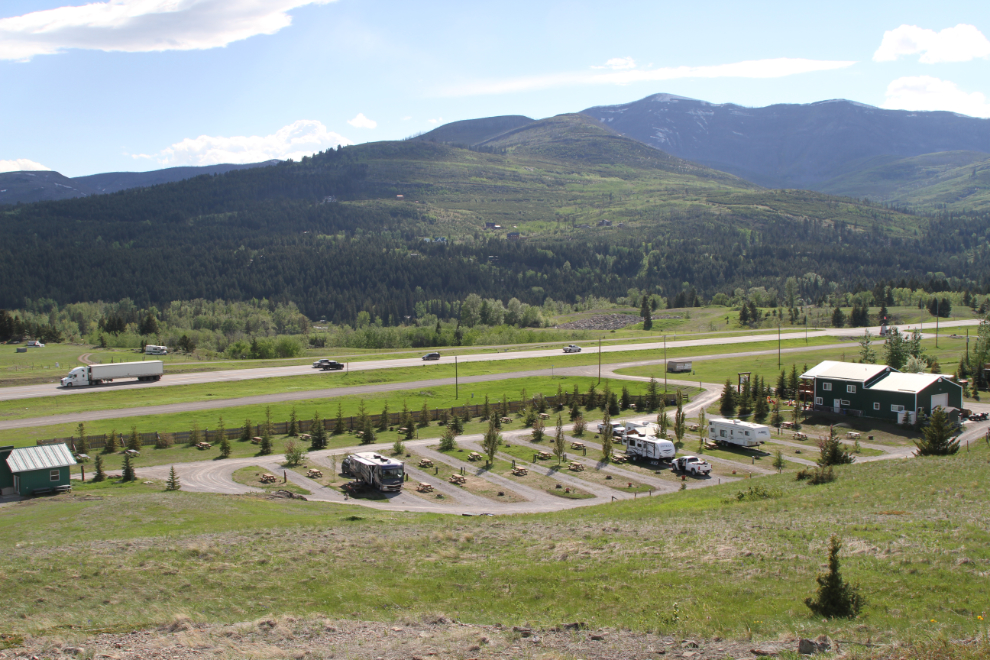
The hill above the campground offered even better views of the valley and surrounding mountains, and lots of wildflowers.
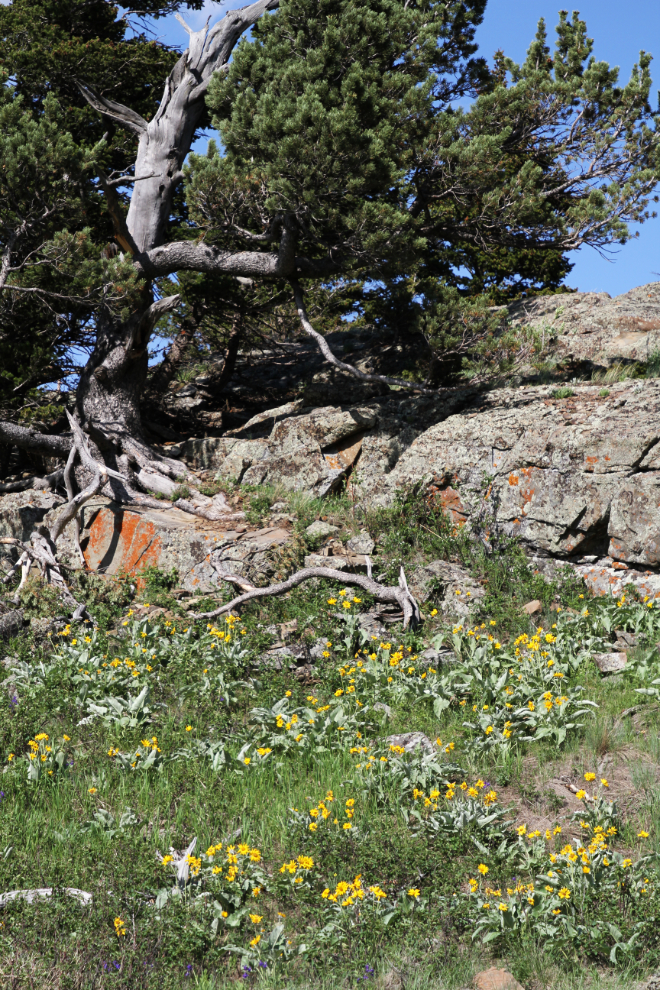
After dinner, we drove to the nearby Leitch Collieries Provincial Historic Site. This is another site that’s very visible from the highway, so had been on my list of places to stop “when I had time” for many years. It was the only completely Canadian owned and operated coal mine in the Crowsnest Pass, but only lasted 8 years, closing in 1915. This is the power house in the next photo. It’s the largest building remaining on the site, well reinforced by new timbers.
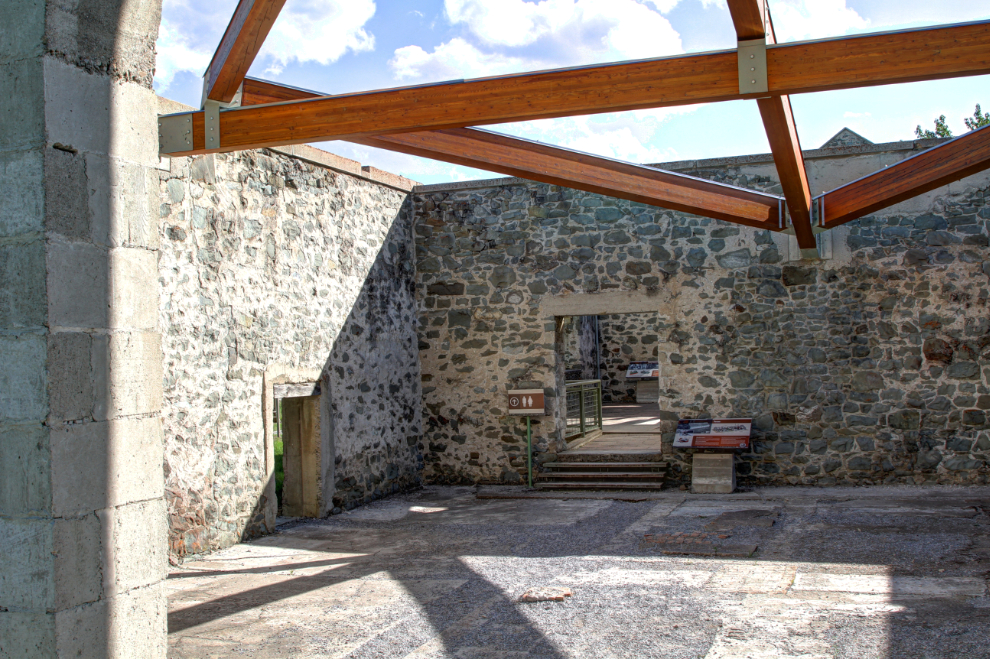
As seems to be the norm in Alberta, the interpretation at Leitch Collieries is of a very high quality. I had many questions as I went through the property, and found answers to them all on interpretive panels.
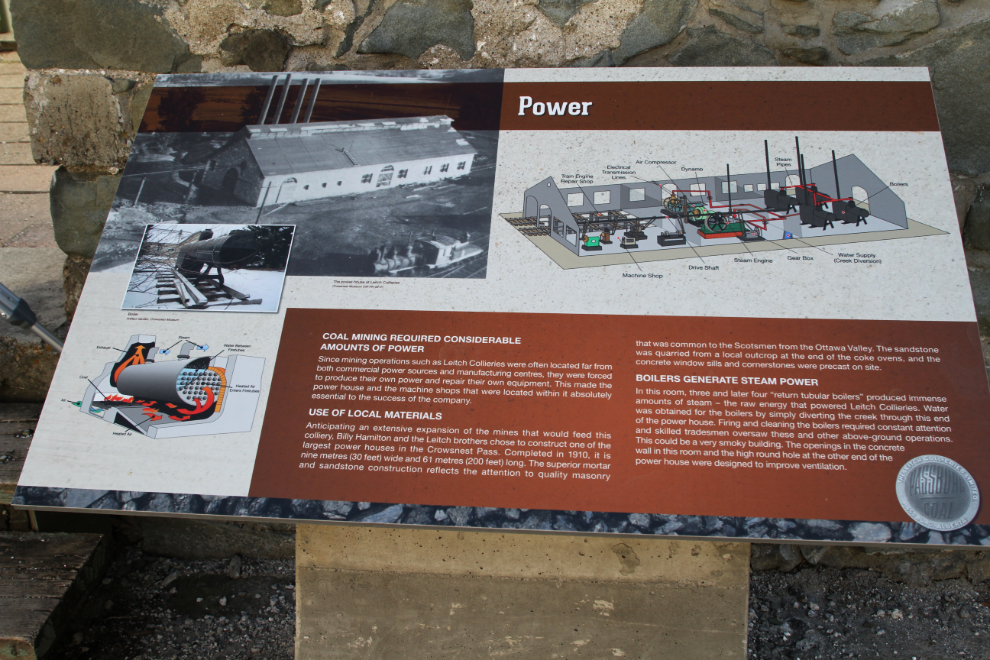
There is a sunken area for conducting talks in the power house, which was the largest such structure in the Crowsnest. The quality of the stonework is as notable as the size.
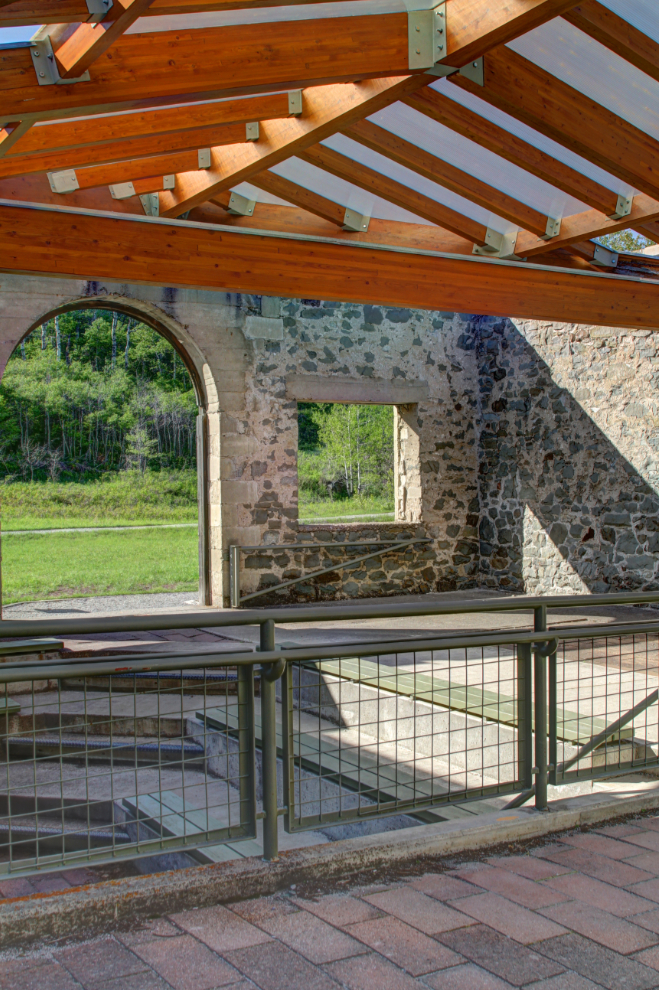
This photo is one of several at the site that show the layout of the colliery from various angles. The power house is just to the right of centre in this photo.
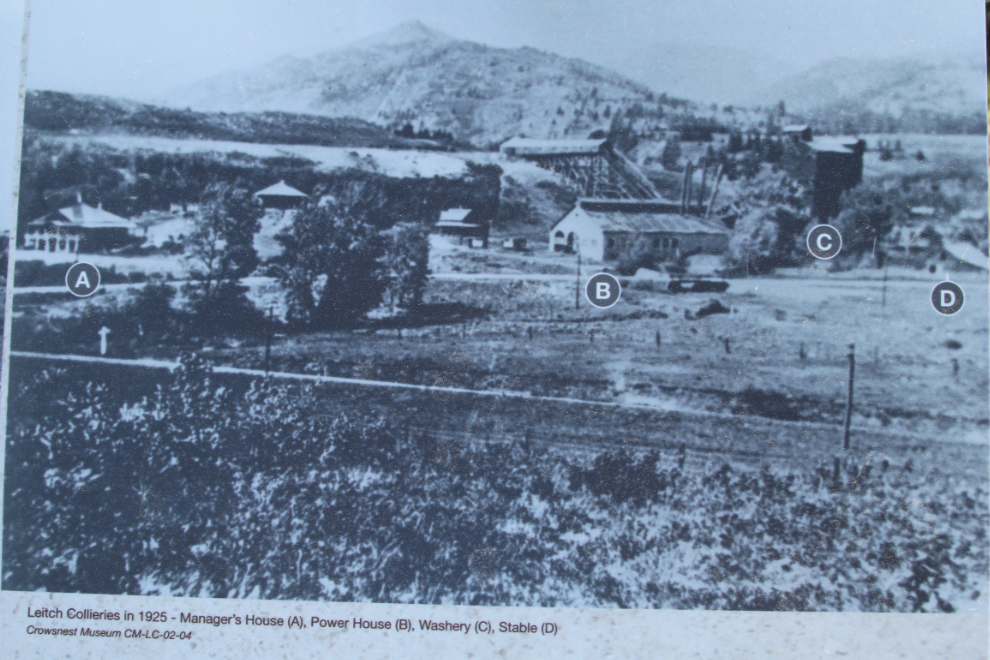
There is a particularly good photo in front of the power that shows it with the massive washery behind it.

The stone mansion built for the mine manager on the opposite side of a rock bluff from the colliery is the other main building remaining. It had indoor plumbing with fresh water pumped from a nearby spring, hardwood floors, a large balcony on 3 sides of the second story, and a dumbwaiter running from the ground-floor kitchen to the dining room.
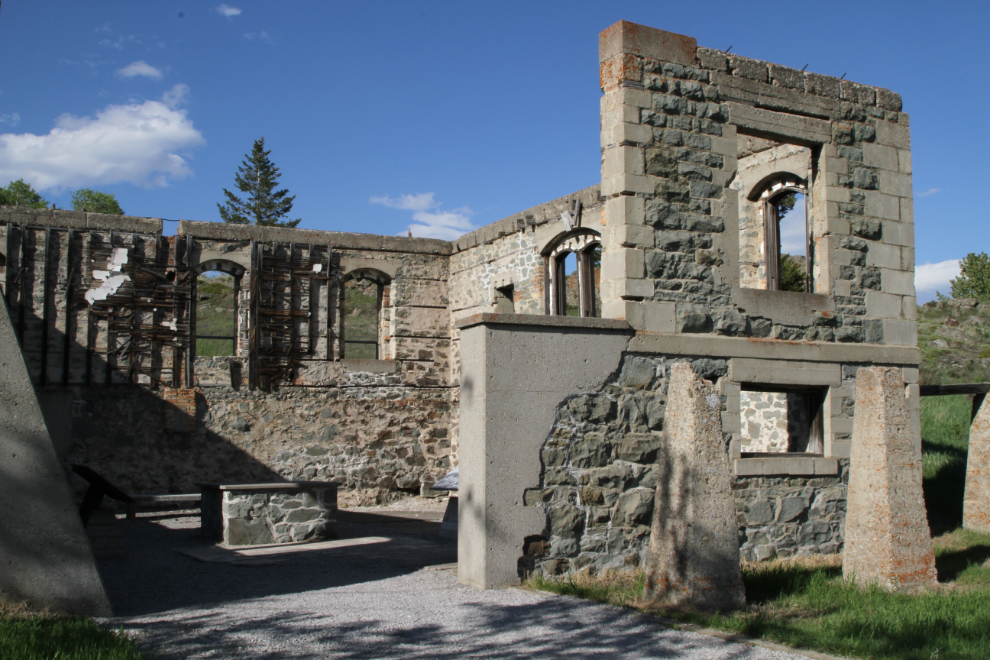
The next photo shows the power house house from the rock bluff separating it from the mine manager’s house. This was my favourite view on the property. There’s no trail to get up there, but it would be a good addition 🙂
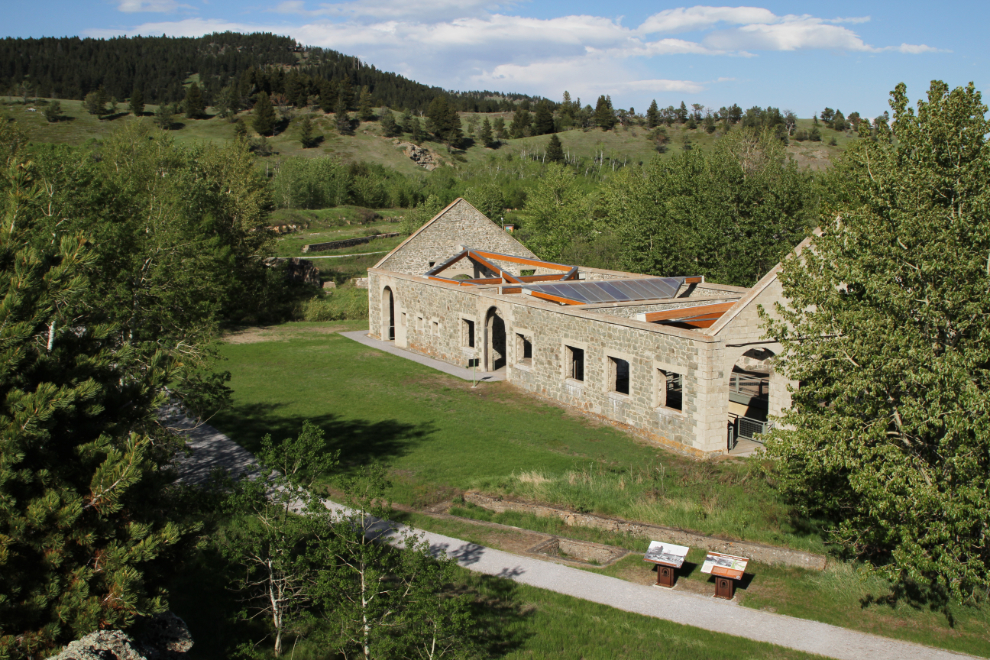
The coal washery was quite a structure, but there’s nothing left now. One of the panels says that the company went bankrupt because of conditions the owners had no control over, but my interpretation of what I saw and read is that they over-built. Everything was larger and fancier than what was needed – the large stone mansion for the manager, the largest power plant in the region, and only about 1/3 of the ovens were ever fired.
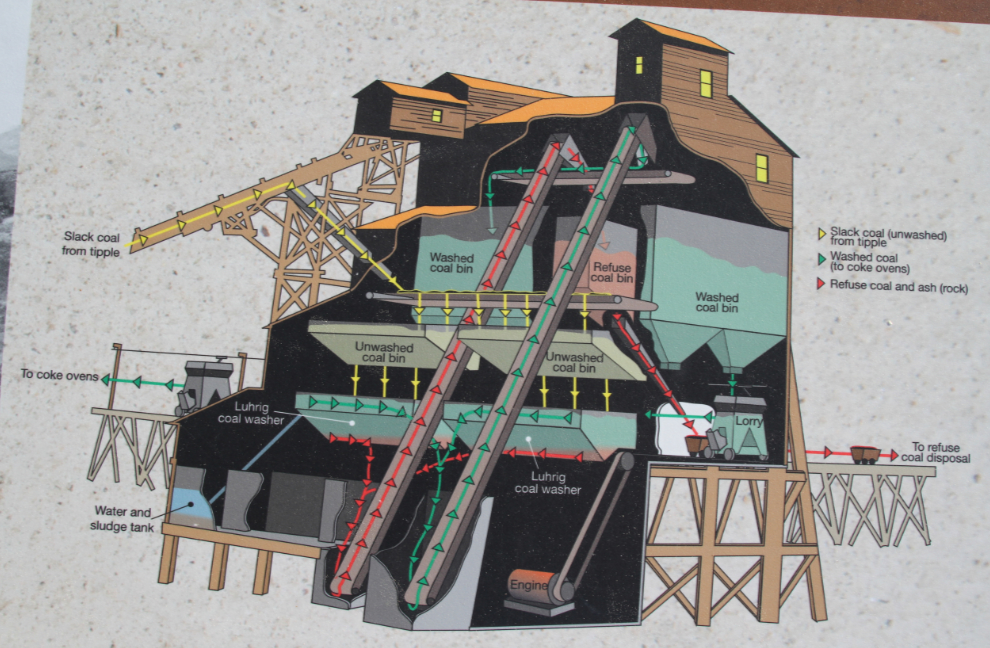
This is all that’s left of the impressive line of 101 fancy Mitchell coke ovens, which had two doors and were much more efficient than the traditional beehive ovens which only had one door.

A final look at the mine manager’s house, from Highway 3. This is the view that had been enticing me for so long.
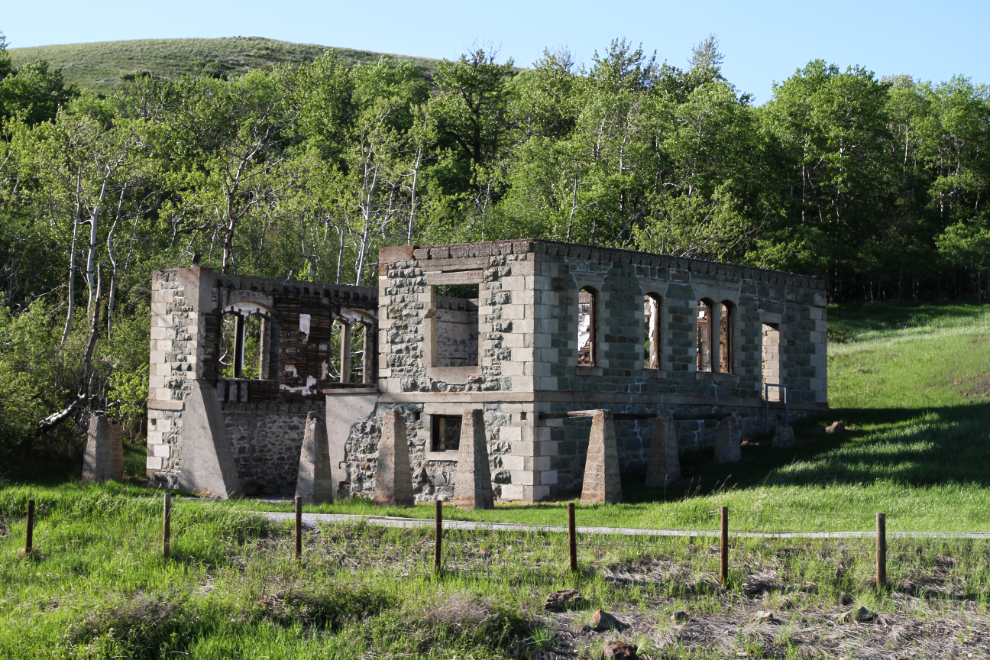
The next morning got off to its usual lazy start in the RV. Bella loves the cool morning air 🙂
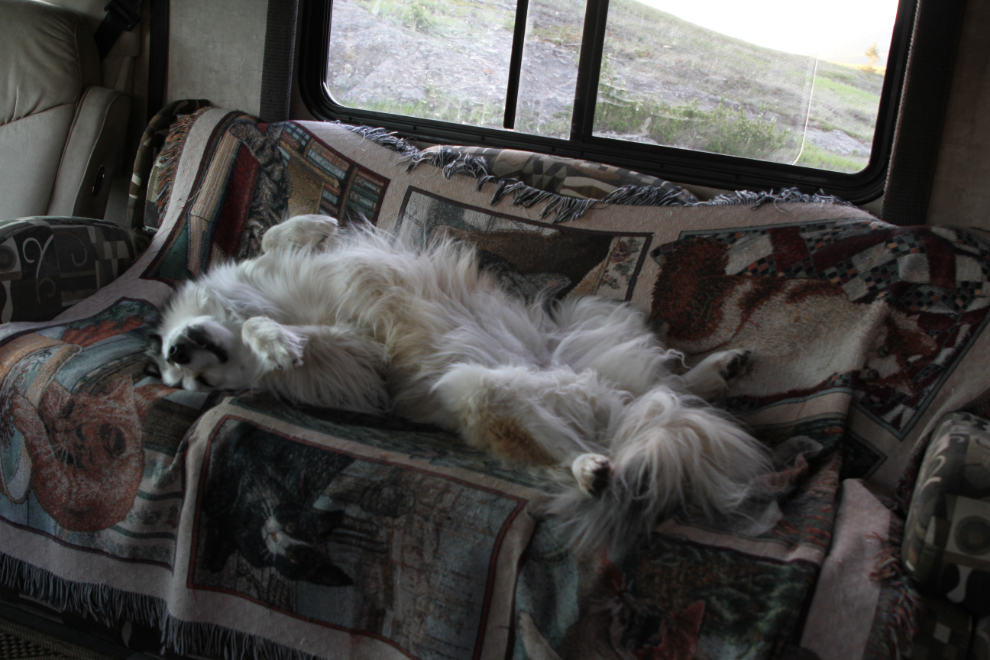
By 07:30, the dogs and I were walking back up the hill above the RV park to enjoy the morning light and the wildflowers.

When Cathy came back from having a shower, she said that the washrooms are “exquisite.” That’s not a term that I’d ever heard in a campground, so I had to go for a look. While I might not use that term, Crowsnest Pass Campground has the nicest washrooms I’ve yet seen in a campground. Although there’s a lot of highway noise, the campground served our needs very well, and we’ll probably stay there again on our next trip.
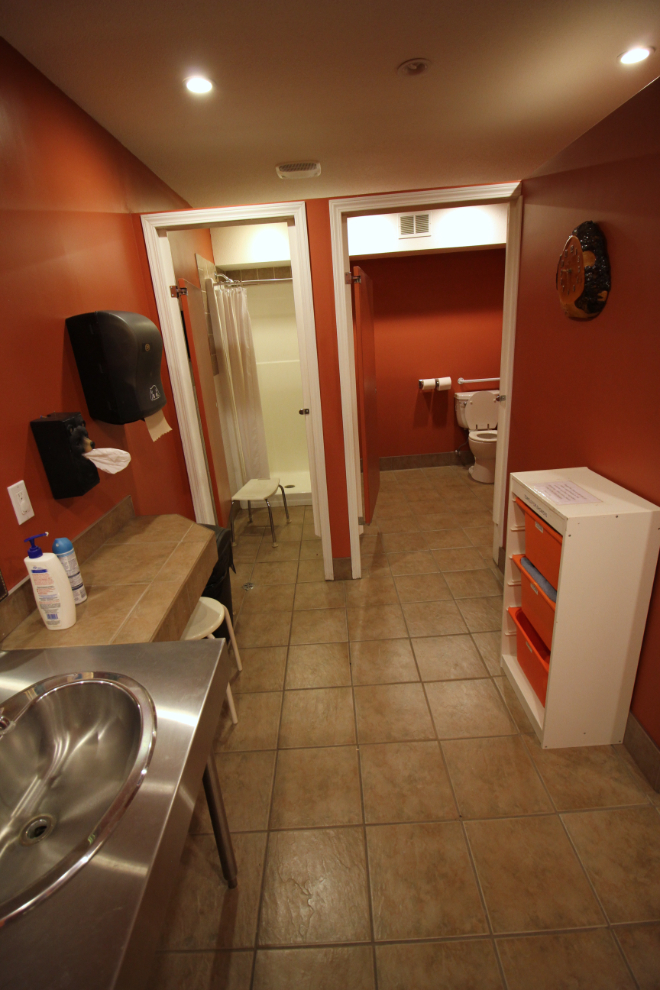
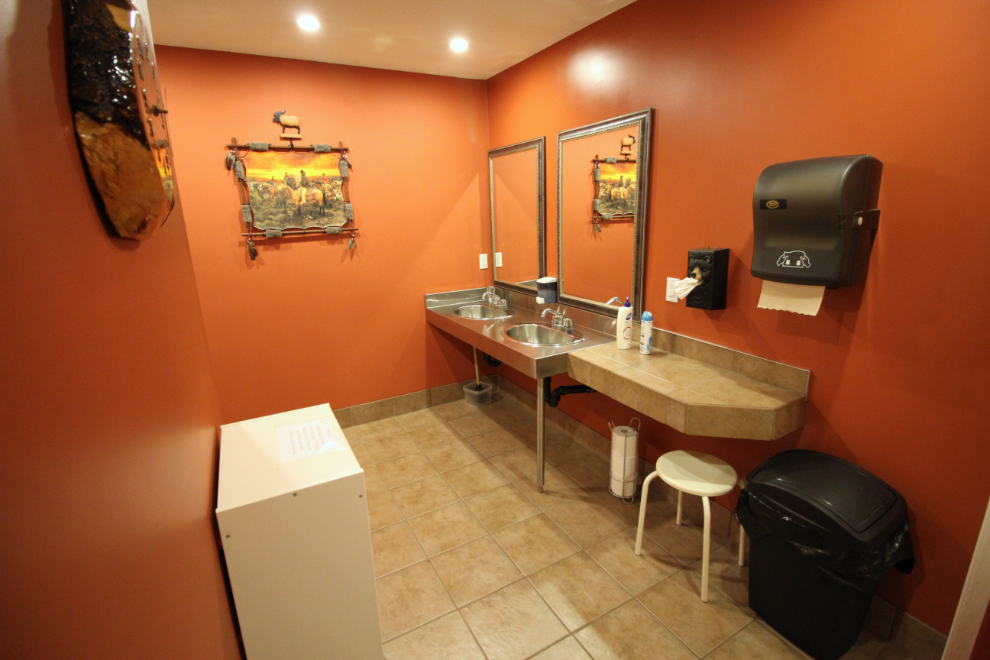
Beside west-bound Highway 3 right at the campground entrance is this very attractive “Welcome to the Municipality of Crowsnest Pass” structure. As the Crowsnest Pass coal industry faded, the communities of the region were hard hit financially as their tax bases collapsed. In 1979, the Municipality of Crowsnest Pass was formed by the Town of Coleman, the Town of Blairmore, the Village of Frank, the Hamlet of Hillcrest, and the Village of Bellevue.

Before leaving Crowsnest Pass, we wanted to see historic downtown Coleman, which in 2001 was designated a National Historic Site of Canada because of the number of historic buildings and other resources that still exist. Many buildings have interpretive panels on them, including the fire hall which was built after a large fire in 1905. A sign above the door in the little addition at the right rear says “Town Office”, though it’s a private residence now.
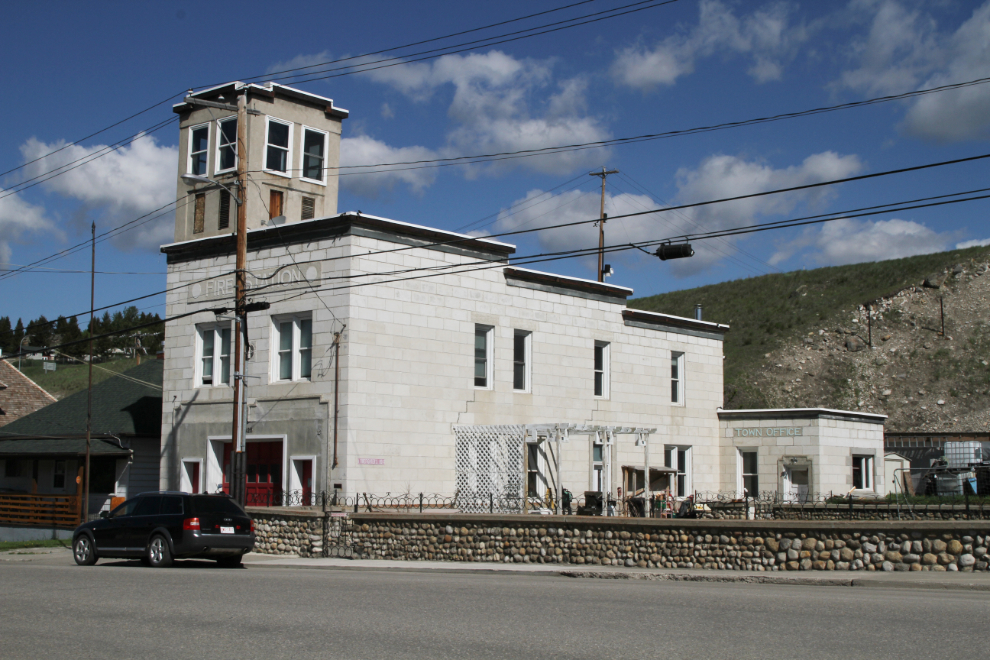
The vehicles are different, but the residential areas around downtown Coleman retain much of the look and character of the coal-mining days.
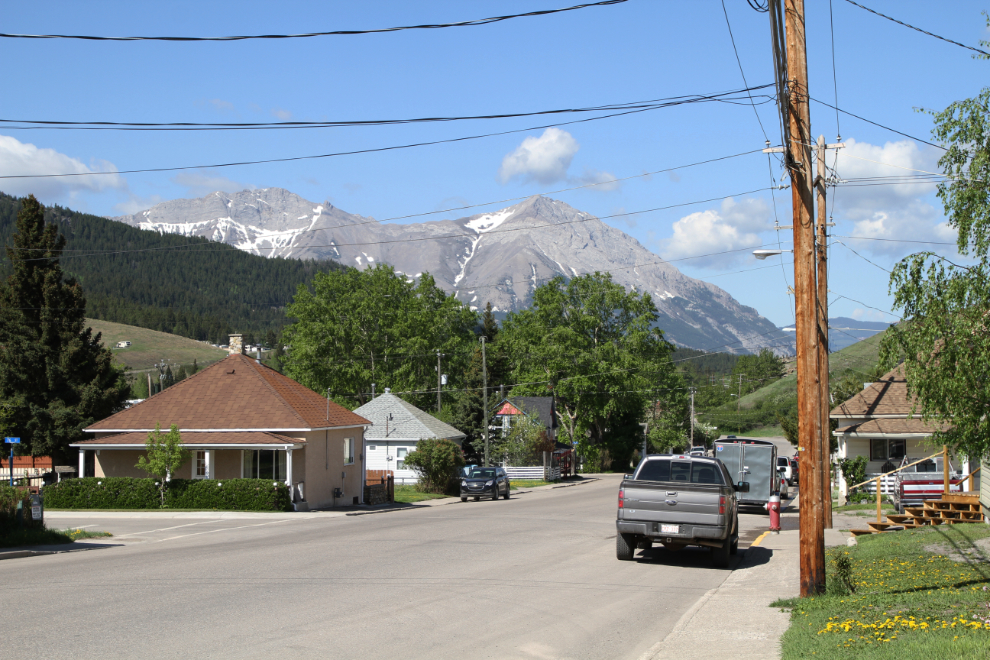
Coleman’s first bank eventually became part of the Canadian Bank of Commerce. The original bank building from 1904 was replaced by this small but imposing brick structure in 1928.
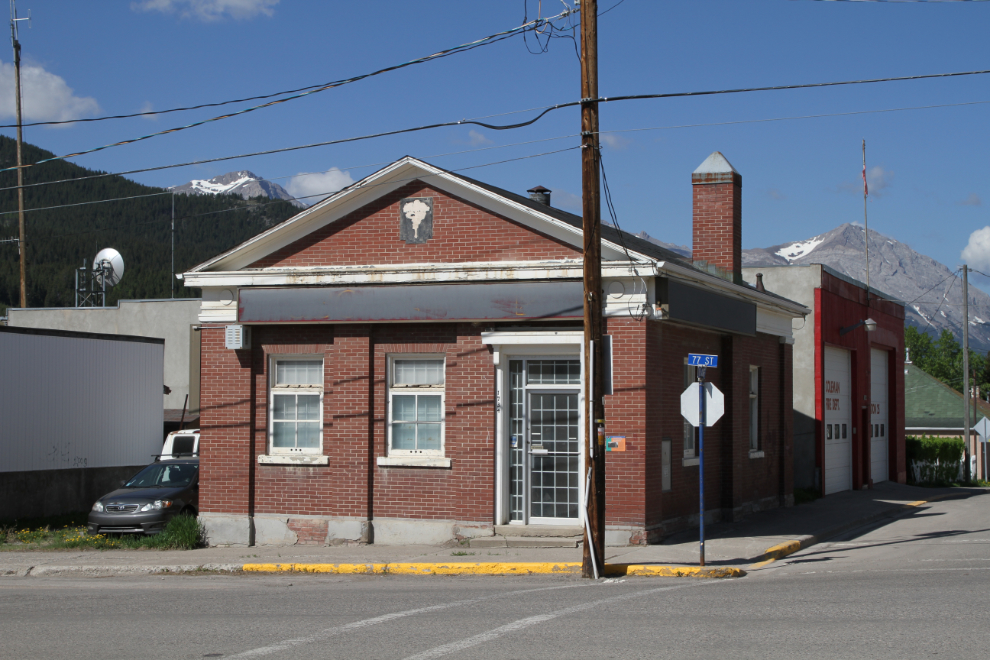
The Coleman High School, built in 1936, now houses the Crowsnest Museum.
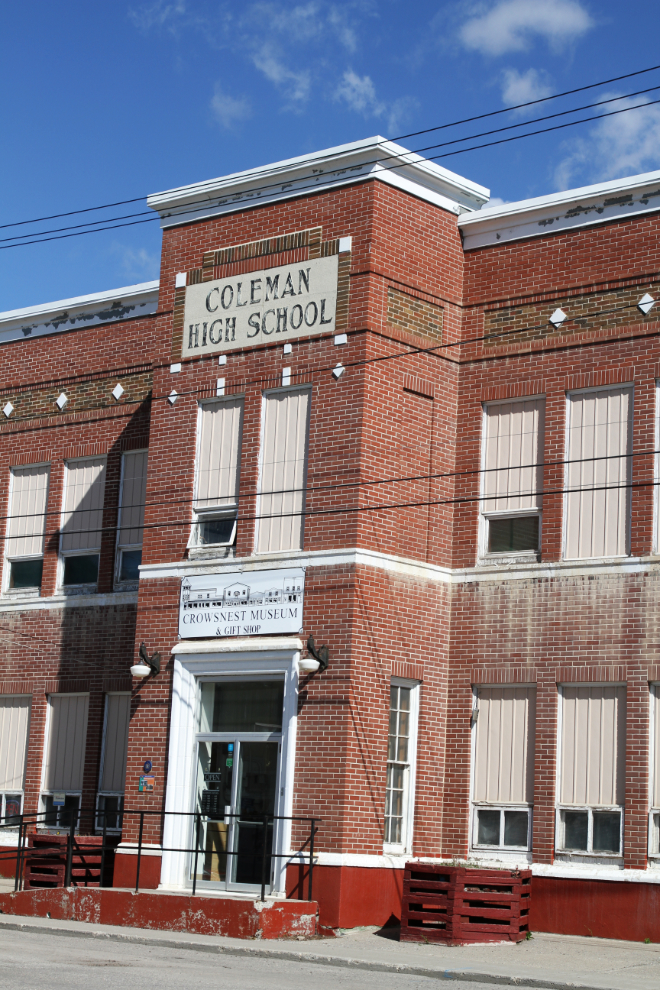
I love old theatres, and would sure like to see the interior of the Roxy, which dates to 1948. It’s main structure is a large Quonset hut which was erected right after Coleman’s worst fire. The neon sign is a classic. The Crowsnest Herald has posted some photos of the interior and more information.
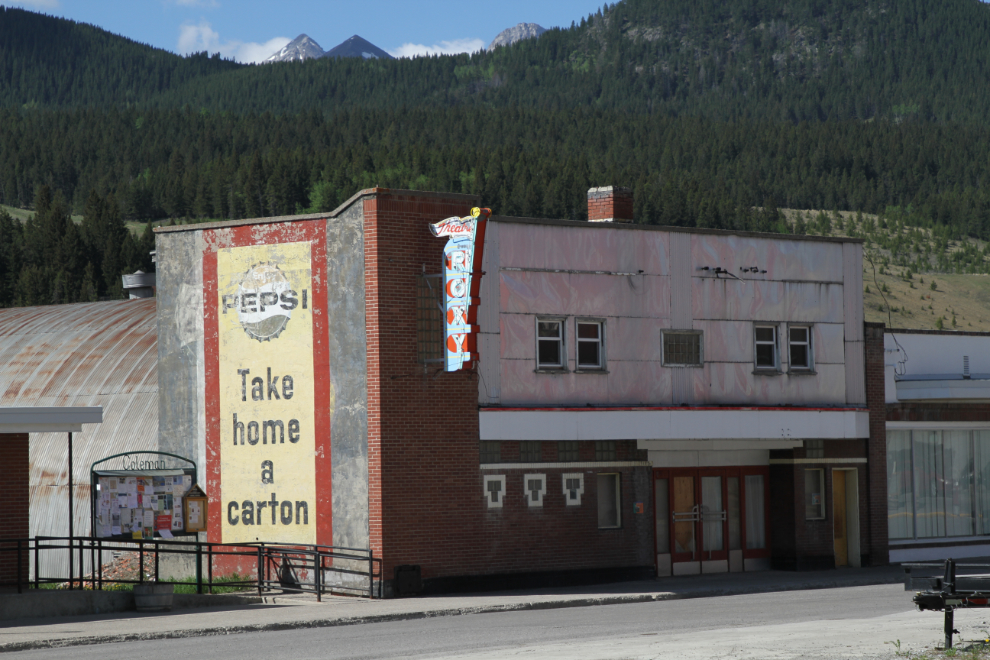
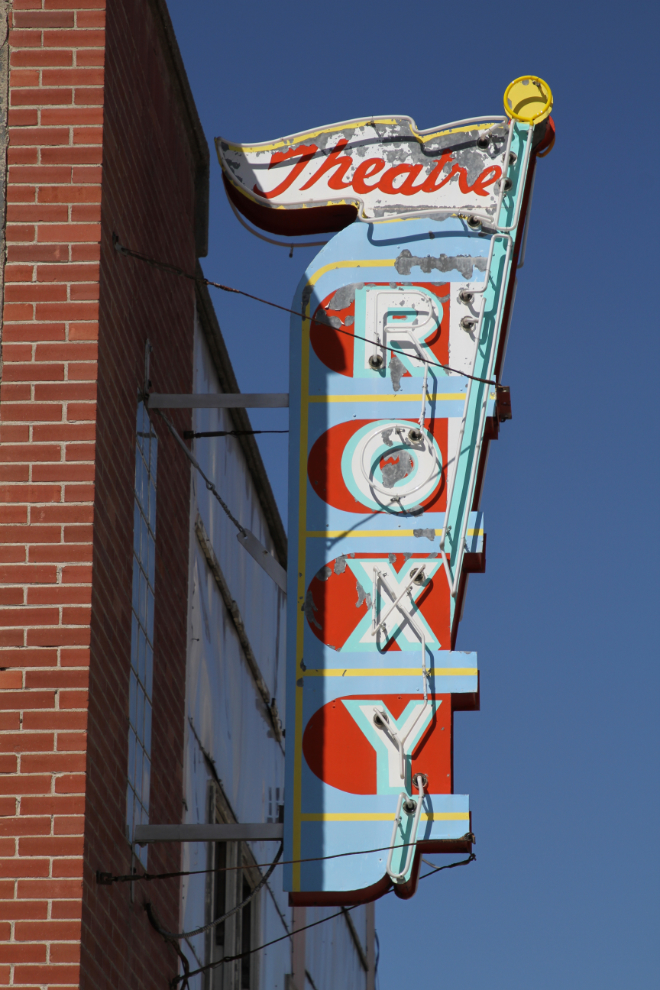
The war memorial is particularly impressive for a small town, and I wanted to have a close look, but both gates to the small park it’s in were securely padlocked. I don’t think I’ve seen access to a war memorial barred anywhere in the world.
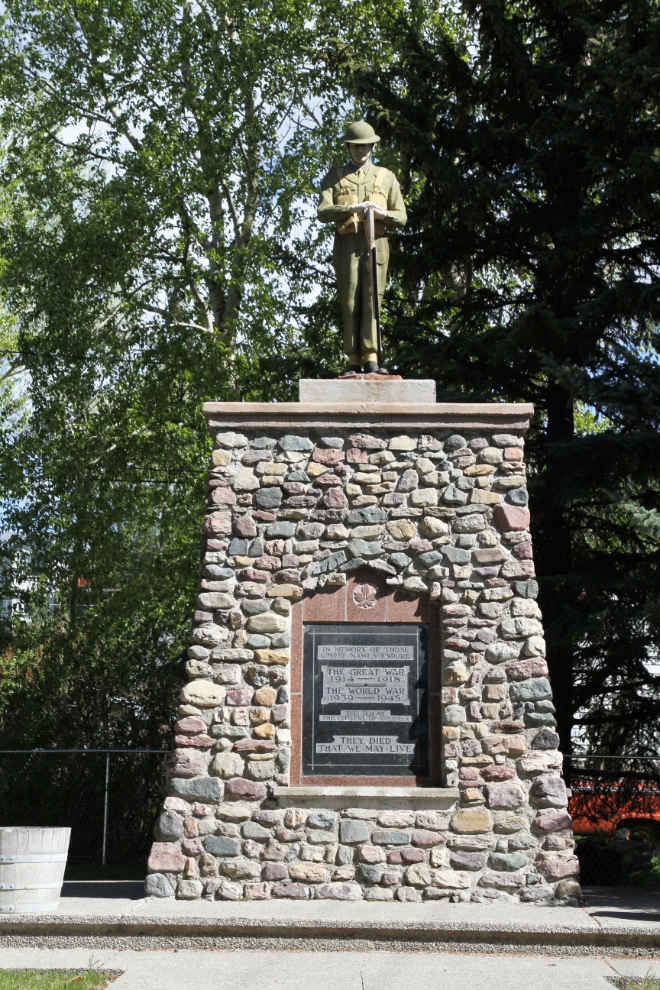
I really wanted to see the Alberta Provincial Police barracks, but although it’s widely reported to be open and I could see displays through the windows, the doors were locked and there’s not even a sign of any kind on the building noting that it’s a museum.
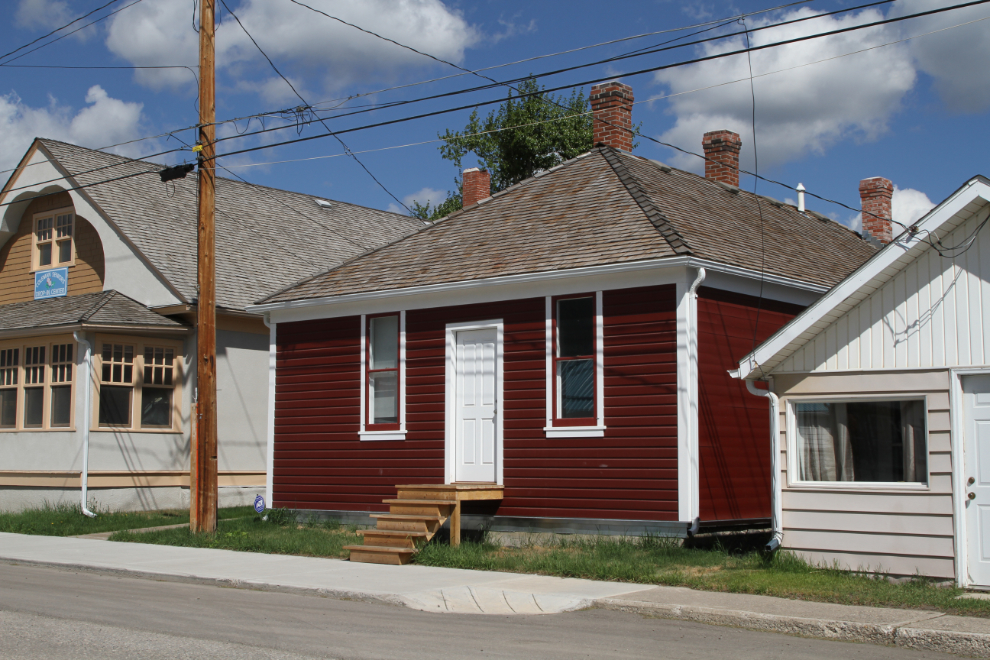
While I did a fast walking town of downtown Coleman, Cathy poked around on her own. She went into an art studio that wasn’t really open but whose door wasn’t locked, and got into a long conversation with the owner, Kari Lehr. I joined them, and we continued the conversation. Kari is among the local artists working to turn Coleman into an arts hub, and she’s going to be doing a show at the North End Gallery in Whitehorse in September. The tv in the motorhome, which we’ve never turned on, is now wall space for a wonderful bear print (called “Field of Dreams”) created by Kari.

Although it was time to move on to Waterton Lakes National Park where we had reservations, we’re not nearly finished with Coleman specifically or the Crowsnest Pass generally, and we’ll be seeing Kari in September to refresh those connections 🙂